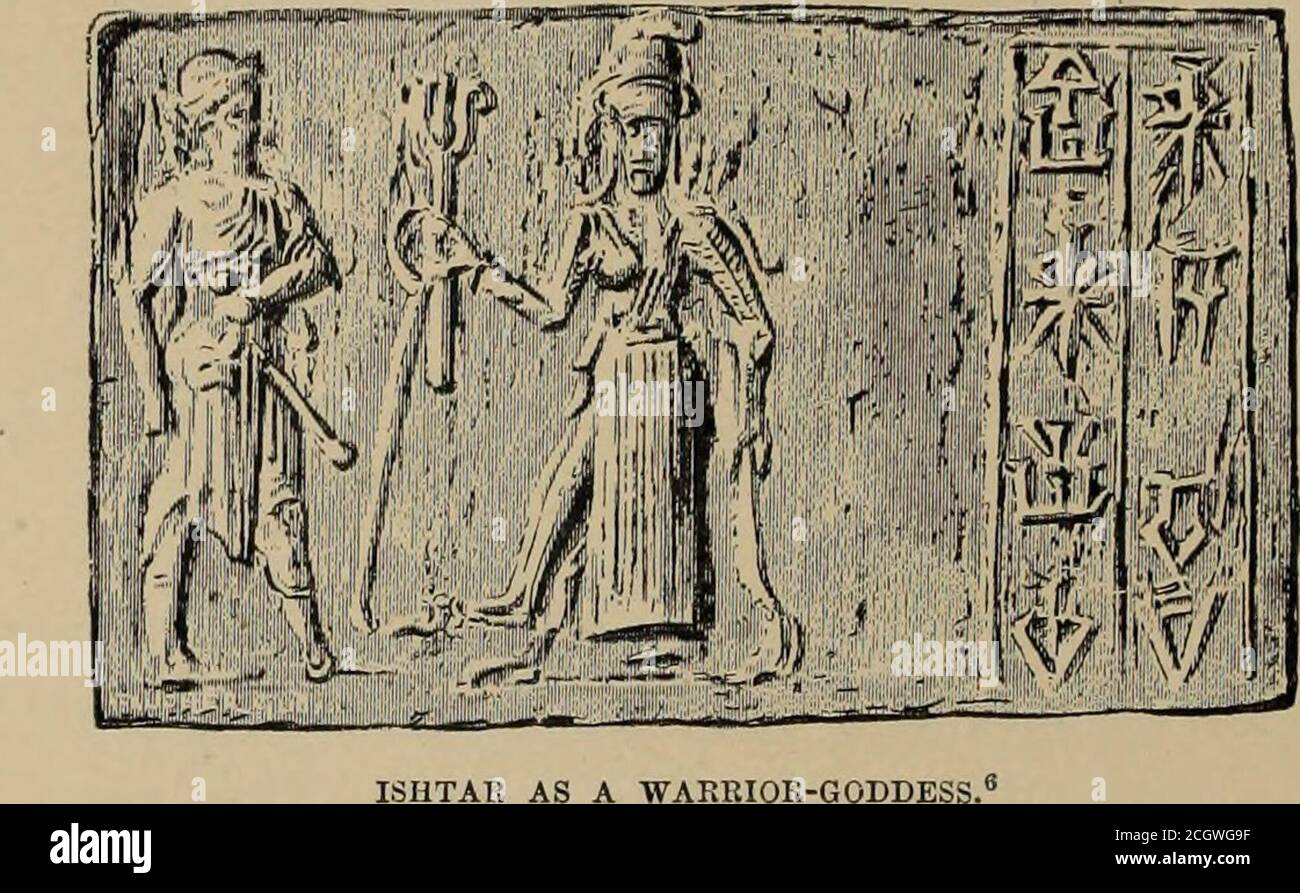. The dawn of civilization: Egypt and Chaldaea . gnifies the herald,the messenger of the day. 3 The rôle of Nebo was determined by the early As^yriologists (Rawlinson, On the Religion of theBabylonians and Assyrians, pp. 523-526 ; Oppert, Expedition en Mésopotamie, vol. ii. p. 257 ; Lenormant,Essai de Commentaire de Berose, pp. 114-116). He owed his functions partly to his alliance withother gods (Sayce, Religion of the Ancient Babylonians, pp. 118, 119). • 4 See the chapter devoted by Sayce to the consideration of Ishtar in his Religion of the AncientBabylonians (IV. Tammuz and Ishtar, p. 221

Image details
Contributor:
Reading Room 2020 / Alamy Stock PhotoImage ID:
2CGWG9FFile size:
7.1 MB (513.7 KB Compressed download)Releases:
Model - no | Property - noDo I need a release?Dimensions:
2010 x 1243 px | 34 x 21 cm | 13.4 x 8.3 inches | 150dpiMore information:
This image is a public domain image, which means either that copyright has expired in the image or the copyright holder has waived their copyright. Alamy charges you a fee for access to the high resolution copy of the image.
This image could have imperfections as it’s either historical or reportage.
. The dawn of civilization: Egypt and Chaldaea . gnifies the herald, the messenger of the day. 3 The rôle of Nebo was determined by the early As^yriologists (Rawlinson, On the Religion of theBabylonians and Assyrians, pp. 523-526 ; Oppert, Expedition en Mésopotamie, vol. ii. p. 257 ; Lenormant, Essai de Commentaire de Berose, pp. 114-116). He owed his functions partly to his alliance withother gods (Sayce, Religion of the Ancient Babylonians, pp. 118, 119). • 4 See the chapter devoted by Sayce to the consideration of Ishtar in his Religion of the AncientBabylonians (IV. Tammuz and Ishtar, p. 221, et seq.), and the observations made by Jeremiaa on thesubject in the sequel of his Izdubar-Nimrod (Ishtar-Astarte im Izdubar-Epos), pp. 56-66. 5 With regard to Nana, consult, with reserve, Fr. Lenormant, E>sai de Commentaire de Berose, pp. 100-103, 378, 379, where the identity of Ishtar and Nana is still unrecognized. 6 Drawn by Faucher-Gudin, from a heliogravure in Ménants Recherches sur la Glyptiqtieorientale, vol. i. pl. iv., No. 6.. NEBO AND ISHTAR. 671 the other hand, was regarded as the cold-blooded and cruel warrior who despisedthe pleasures of love and rejoiced in warfare : Ishtar thus combined in her personchastity and lasciviousness, kindness and ferocity, and a peaceful and warlikedisposition, but this incongruity in her characteristics did not seemto disconcert the devotion of her worshippers. The three otherplanets would have had a wretched part to play in comparisonwith Nebo and Ishtar, if they had not been placed under newpatronage. The secondary solar gods, Merodach, Ninib, andNergal, led, if we examine their rôle carefully, but an incom-plete existence : they were merely portions of the sun, whilShamash represented the entire orb. What became of theiapart from the moment in the day and year in which th<were actively engaged in their career ? Where did they spendtheir nights, the hours during which Shamash had retired intothe firmament, and lay hidd